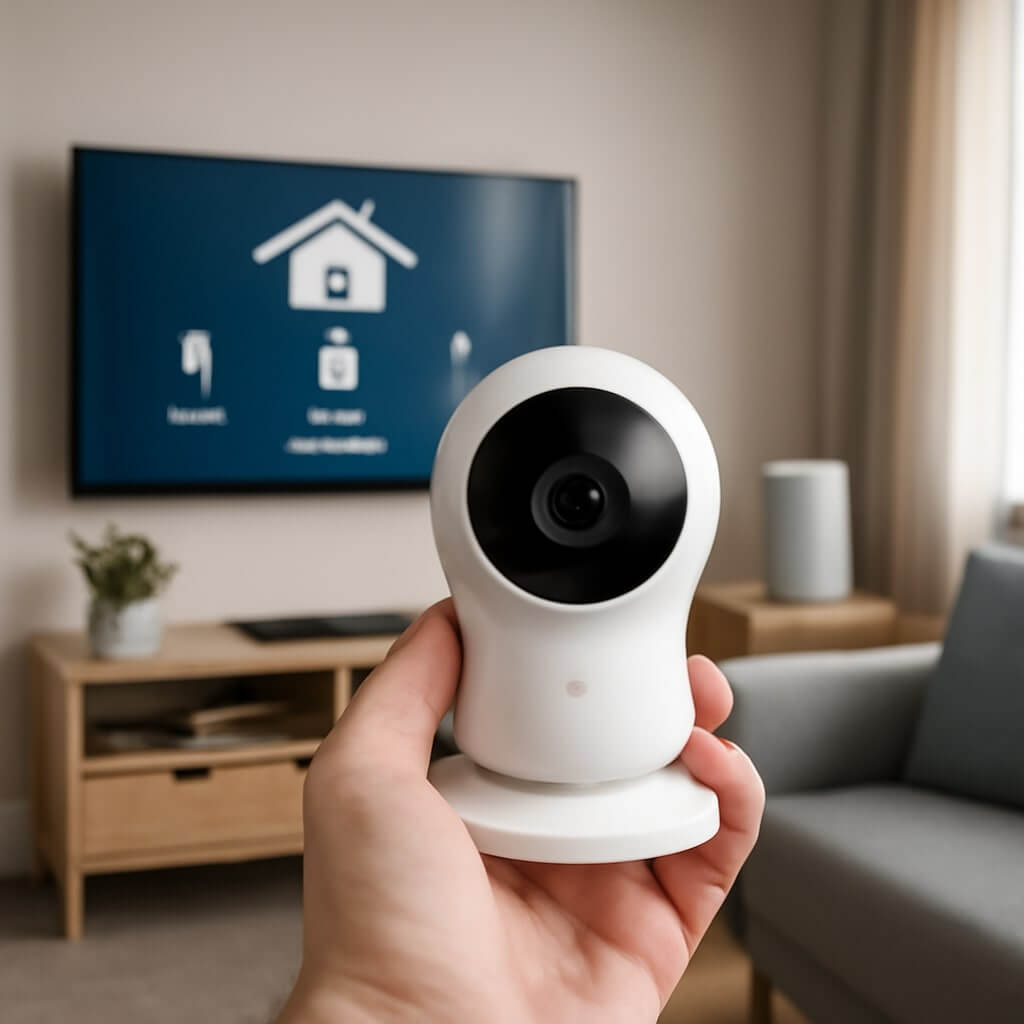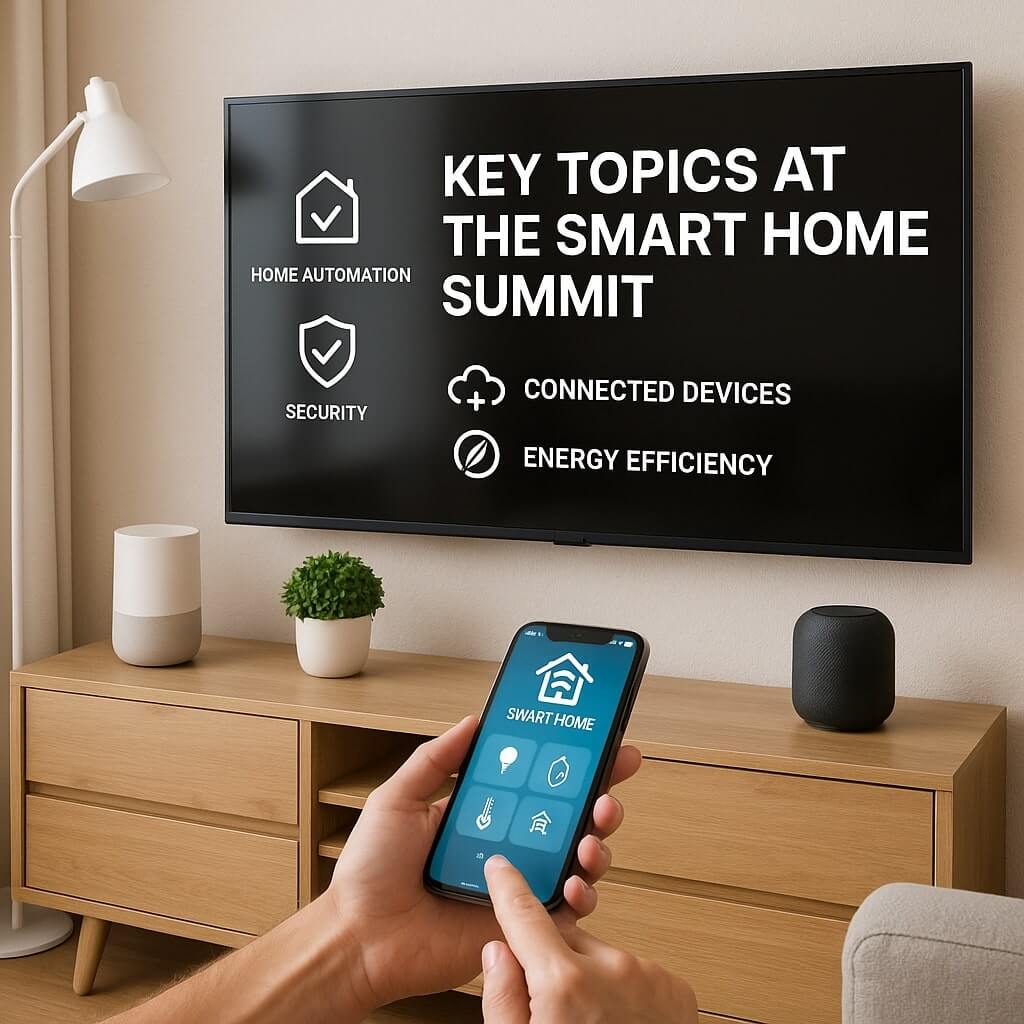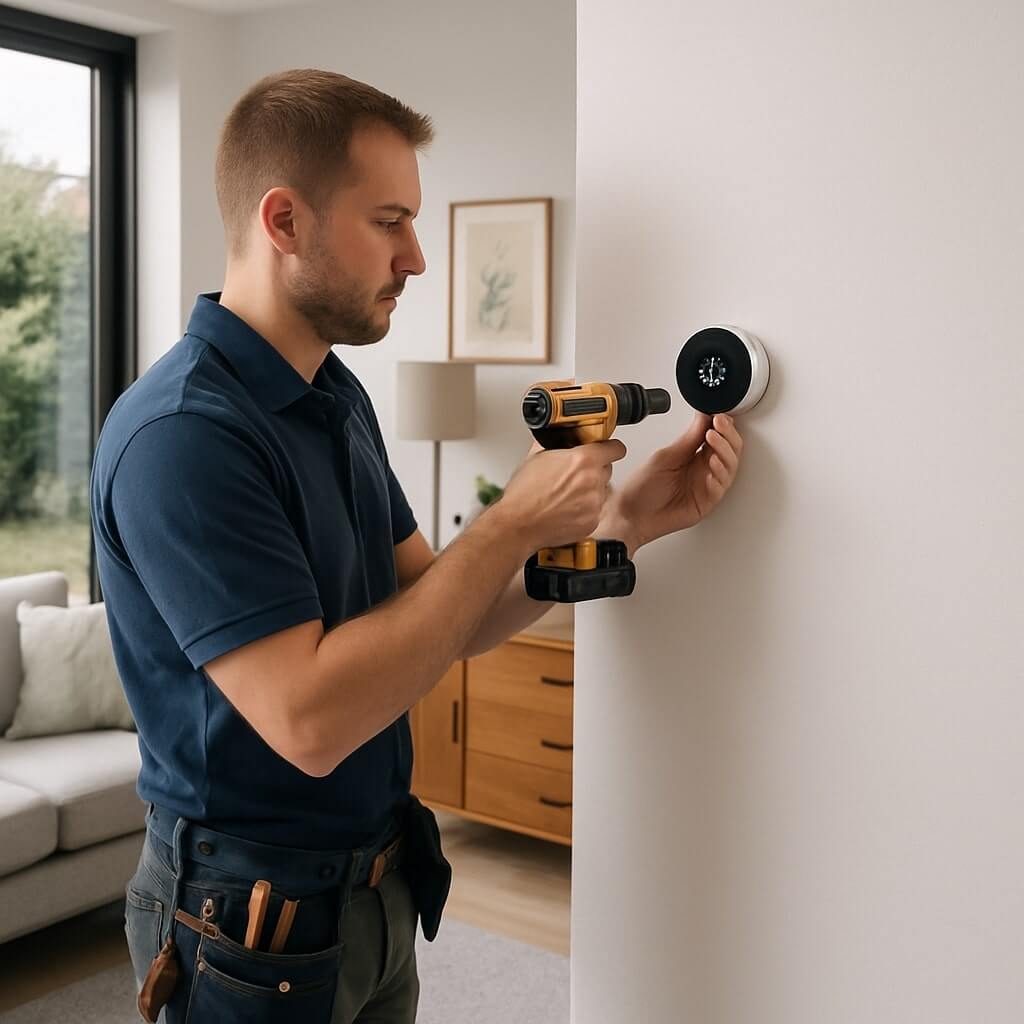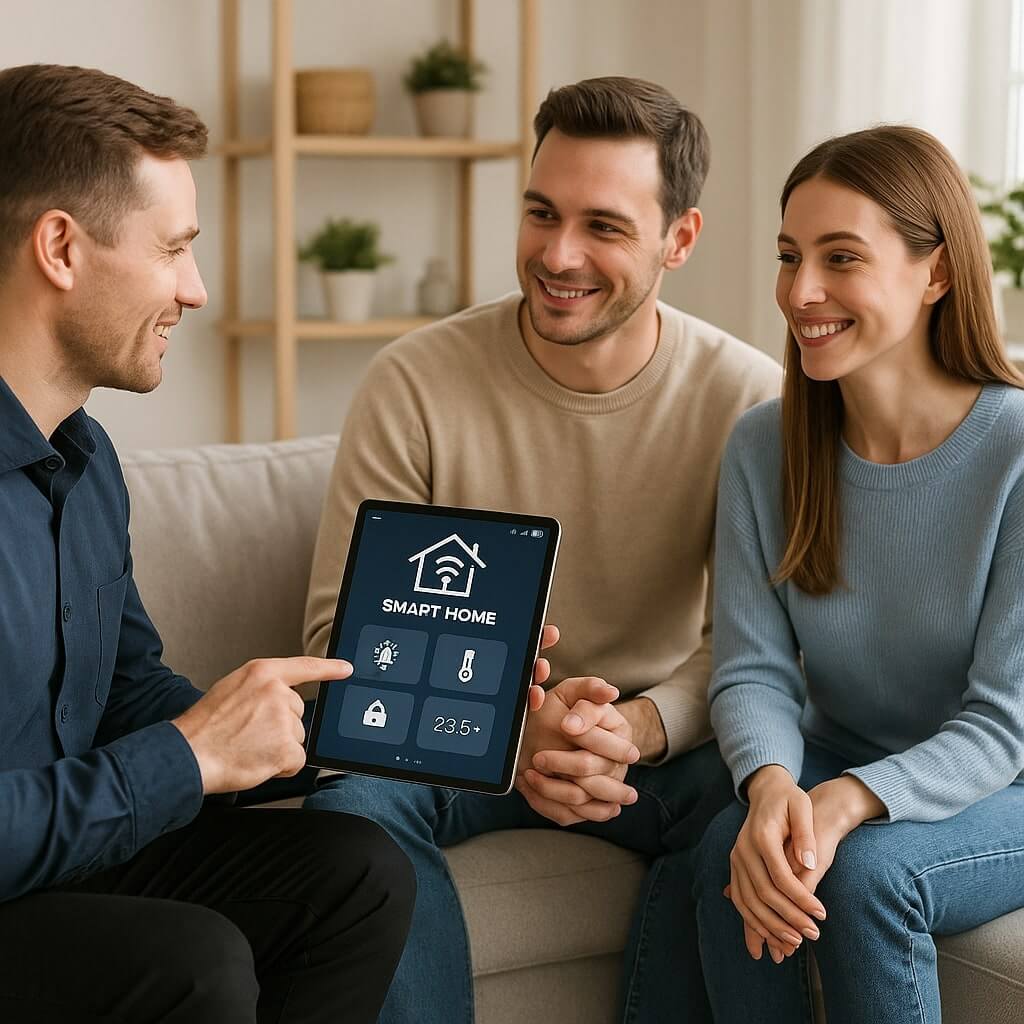Integrating cameras into your smart home can greatly boost security, but it’s not as simple as just installing devices. You’ll need to assess your specific security needs, identify potential vulnerabilities, and choose the right types of cameras with suitable features. Additionally, privacy laws and ethical considerations are critical to guarantee your setup doesn’t infringe on anyone’s rights. Understanding these elements will set the foundation for an effective surveillance system that truly meets your needs.
Key Takeaways
- Assess security needs by identifying vulnerable areas and monitoring high-traffic zones to ensure effective camera placement.
- Choose between indoor and outdoor cameras, considering wired versus wireless options based on your home’s layout and connectivity preferences.
- Prioritize privacy by informing family and guests about camera locations and utilizing motion detection features to limit unnecessary recording.
- Regularly maintain and update camera software to enhance security, functionality, and efficiency of your smart camera system.
- Utilize night vision and motion detection capabilities to improve surveillance effectiveness, ensuring comprehensive coverage during low light and detecting unusual activity.
Understanding Different Types of Cameras
When exploring the integration of cameras in smart homes, it’s vital to understand the various types available. Indoor cameras monitor your living spaces, while outdoor cameras protect your property’s perimeter.
Wired cameras offer stable connections, whereas wireless cameras provide flexibility in placement. PTZ (pan-tilt-zoom) cameras allow for remote movement, while static cameras maintain a fixed view.
Hidden cameras discreetly capture footage without detection, and doorbell cameras enhance entryway security. Don’t forget about security cameras that serve multiple purposes, including webcam alternatives for home office setups.
Choosing the right combination guarantees thorough surveillance tailored to your specific needs.
Assessing Your Security Needs
To effectively secure your home, start by identifying vulnerable areas that need surveillance.
Next, determine the types of cameras that best suit those locations and your overall security strategy.
Finally, assess how often you’ll need to monitor these areas to guarantee ideal protection.
Identify Vulnerable Areas
How can you effectively identify the vulnerable areas in your smart home? Start with a thorough vulnerability assessment to pinpoint weaknesses.
Look for entry points, like doors and windows, and evaluate their security. You’ll want to take into account the following:
- High-traffic areas: Identify spots where intruders might enter unnoticed.
- Low visibility zones: Check areas lacking natural surveillance, like backyards or side entrances.
- Technology hotspots: Verify devices like cameras and routers are secure from hacking.
Determine Camera Types
Selecting the right camera types for your smart home is vital for effective security.
You’ll typically need indoor cameras for monitoring spaces like living rooms or hallways, providing real-time surveillance and deterring potential intruders.
Outdoor cameras, on the other hand, are critical for monitoring your property’s perimeter, capturing wider angles and higher resolution for more reliable evidence.
Consider features like night vision, motion detection, and weather resistance when choosing outdoor options.
Assess your specific security needs to guarantee you deploy the right combination of indoor and outdoor cameras, maximizing your home’s safety and peace of mind.
Assess Monitoring Frequency
Once you’ve chosen the appropriate camera types, it’s important to assess how often you’ll need to monitor them.
Establishing effective monitoring schedules helps guarantee your security needs are met without unnecessary stress.
Consider the following points for frequency adjustments:
- Evaluate peak times for potential security threats.
- Adjust monitoring frequency based on seasonal changes or specific events.
- Utilize motion detection features to reduce constant monitoring.
Privacy Considerations and Best Practices
As you integrate cameras into your smart home, it’s essential to take into account privacy implications to protect your personal space.
Understanding camera ethics is vital; make sure your cameras aren’t intruding on areas where privacy is expected, like bedrooms or bathrooms.
Maintain invasion awareness by informing family members and guests about camera locations. Use features like motion detection and privacy modes to limit recording times.
Regularly review your privacy settings and software updates to safeguard your data.
Finally, consider secure storage options for footage, as this can help you manage access and enhance your overall privacy strategy.
Connectivity Options for Smart Cameras
When choosing connectivity options for your smart cameras, understanding the different technologies available is vital for best performance and reliability.
Understanding the various connectivity technologies is crucial for ensuring optimal performance and reliability in smart cameras.
You’ll want to take into account various wireless protocols and power options to guarantee seamless operation.
- Wi-Fi: Offers high bandwidth for streaming, but may require a constant power source.
- Zigbee: Provides low-power connectivity, ideal for battery-operated cameras in remote locations.
- Bluetooth: Suitable for short-range applications, though it may not support continuous video streaming.
Installation Tips for Optimal Coverage
For ideal camera coverage in your smart home, focus on strategic placement and the right angles.
Position cameras at key entry points and guarantee they capture wide fields of view without obstructions.
Adjusting the camera angle can greatly enhance visibility and security, so take the time to test different setups.
Camera Placement Strategies
Effective camera placement is vital for maximizing the coverage and security of your smart home.
To guarantee peak performance, consider these strategies:
- Camera Height: Install cameras at least 8-10 feet high to avoid tampering.
- Outdoor Placement: Position cameras to cover entry points, driveways, and blind spots.
- Indoor Positioning: Confirm cameras integrate with your decor while maintaining accessibility concerns for easy adjustments.
Wall mounting is essential for stability, and pay attention to coverage angles to avoid blind spots.
With these strategies, you’ll enhance the effectiveness of your surveillance system, providing peace of mind for your smart home.
Angle and Field Optimization
To achieve ideal coverage in your smart home surveillance system, it’s crucial to carefully adjust the angle and field of view of your cameras.
Begin by identifying key areas you want to monitor, ensuring no blind spots exist. Make necessary angle adjustments to capture wider perspectives while focusing on critical entry points.
Use tools like a level or app for precise alignment. Remember that optimal field coverage should balance both horizontal and vertical views for thorough surveillance.
Regularly review camera footage to assess performance and make further adjustments as needed, ensuring your home remains secure and monitored effectively.
Integrating Cameras With Other Smart Devices
As you integrate cameras with other smart devices in your home, you’ll enhance surveillance capabilities and streamline automation. Confirming camera compatibility with your existing devices is essential for peak performance.
- Connect cameras to smart doorbells for motion alerts.
- Use cameras with smart lights to trigger illumination upon detection.
- Sync cameras with smart speakers for voice alerts and live feeds.
This integration not only improves security but also enhances overall device automation, allowing you to create a cohesive smart home ecosystem.
Choosing the Right Camera Features
When choosing a camera for your smart home, you’ll want to prioritize resolution and image quality to guarantee clear footage.
Consider night vision capabilities for effective monitoring in low-light conditions, and look for advanced motion detection features that alert you to activity.
Selecting the right combination of these features enhances both security and convenience.
Resolution and Image Quality
Choosing the right camera features for your smart home hinges considerably on resolution and image quality. High image resolution enhances video quality, ensuring clear and detailed footage.
When selecting your cameras, consider these key aspects:
- Resolution: Aim for at least 1080p for ideal clarity.
- Frame Rate: Higher rates (30fps or more) reduce motion blur.
- Compression Technology: Efficient encoding maintains quality while saving bandwidth.
Night Vision Capabilities
Night vision capabilities are essential for ensuring your smart home cameras can effectively monitor your property after dark.
Look for cameras that utilize infrared technology, as this allows for clear visibility in low light conditions. Infrared sensors capture images by detecting heat, which enhances the camera’s low light performance without compromising quality.
When choosing a camera, check its range in total darkness and assess how well it produces color images during twilight hours.
Investing in a model with advanced night vision can greatly enhance your home security, giving you peace of mind when you need it most.
Motion Detection Features
While night vision capabilities play a significant role in surveillance, motion detection features are equally important for maximizing your smart home camera’s effectiveness.
To guarantee peak performance, consider the following aspects:
- Motion sensitivity settings: Adjust these to minimize false alarms caused by pets or moving branches.
- Alert customization options: Tailor notifications for specific zones or types of movement to suit your needs.
- Integration with other devices: Connect with alarms or lights for enhanced security responses.
Monitoring and Alerts: What to Expect
As you integrate cameras into your smart home system, you’ll find that monitoring and alerts play a crucial role in enhancing your security.
These systems typically offer real-time alert notifications, ensuring you’re promptly informed of any unusual activity. You can customize alerts based on motion detection and specific zones to suit your needs.
Additionally, many cameras provide options for video storage, allowing you to review footage when necessary.
This combination of immediate alerts and accessible video archives empowers you to maintain a thorough overview of your home’s security, enabling quick responses to potential threats.
Stay informed, stay secure.
Legal Implications of Home Surveillance
Before setting up cameras in your smart home, it’s essential to understand the legal implications of home surveillance. You must comply with privacy laws and consent requirements to avoid legal consequences.
Consider your homeowner responsibilities and the ethical aspects of surveillance, especially regarding neighbors.
- Guarantee regulatory compliance with local laws.
- Obtain consent when capturing footage of others.
- Prioritize data protection to safeguard recorded information.
Understanding these factors will help you navigate the complexities of surveillance ethics and maintain a respectful environment while protecting your property.
Maintaining Your Smart Camera System
To guarantee your smart camera system operates effectively, regular maintenance is essential.
Start with routine camera maintenance tips, like cleaning the lenses to confirm clear images. Check the mounting positions to avoid obstructions.
Don’t forget to regularly perform software updates; these updates enhance security and improve functionality. Set reminders for these updates to keep your system running smoothly.
Additionally, monitor storage space and consider cloud options for video retention.
Conclusion
Integrating cameras into your smart home can greatly enhance security, but it’s essential to approach it thoughtfully. By evaluating your security needs, understanding privacy laws, and selecting appropriate camera types, you’ll create an effective surveillance system. Remember to prioritize features like motion detection and night vision while ensuring regular maintenance and updates. With careful planning and consideration, you can enjoy the benefits of increased safety and peace of mind in your home.




